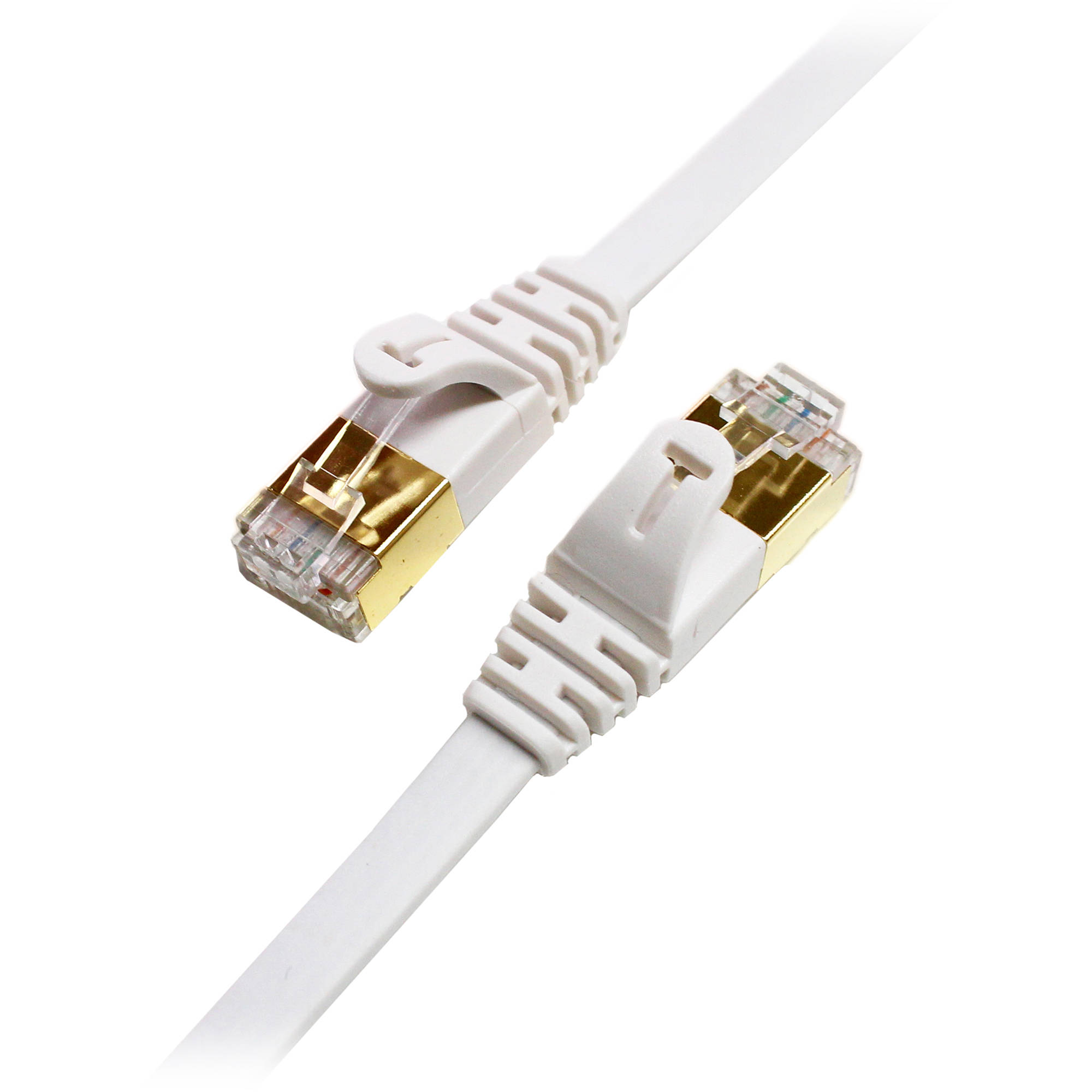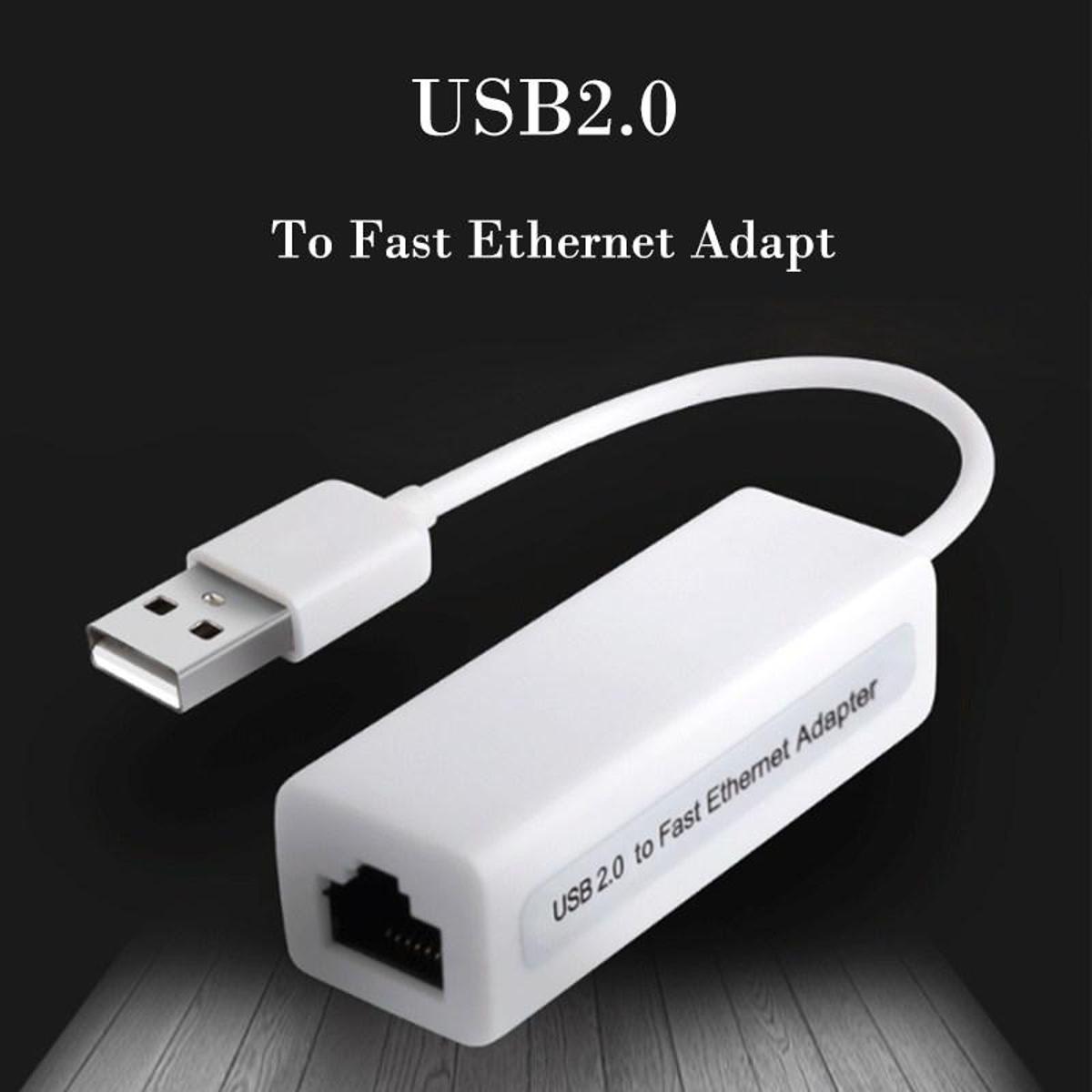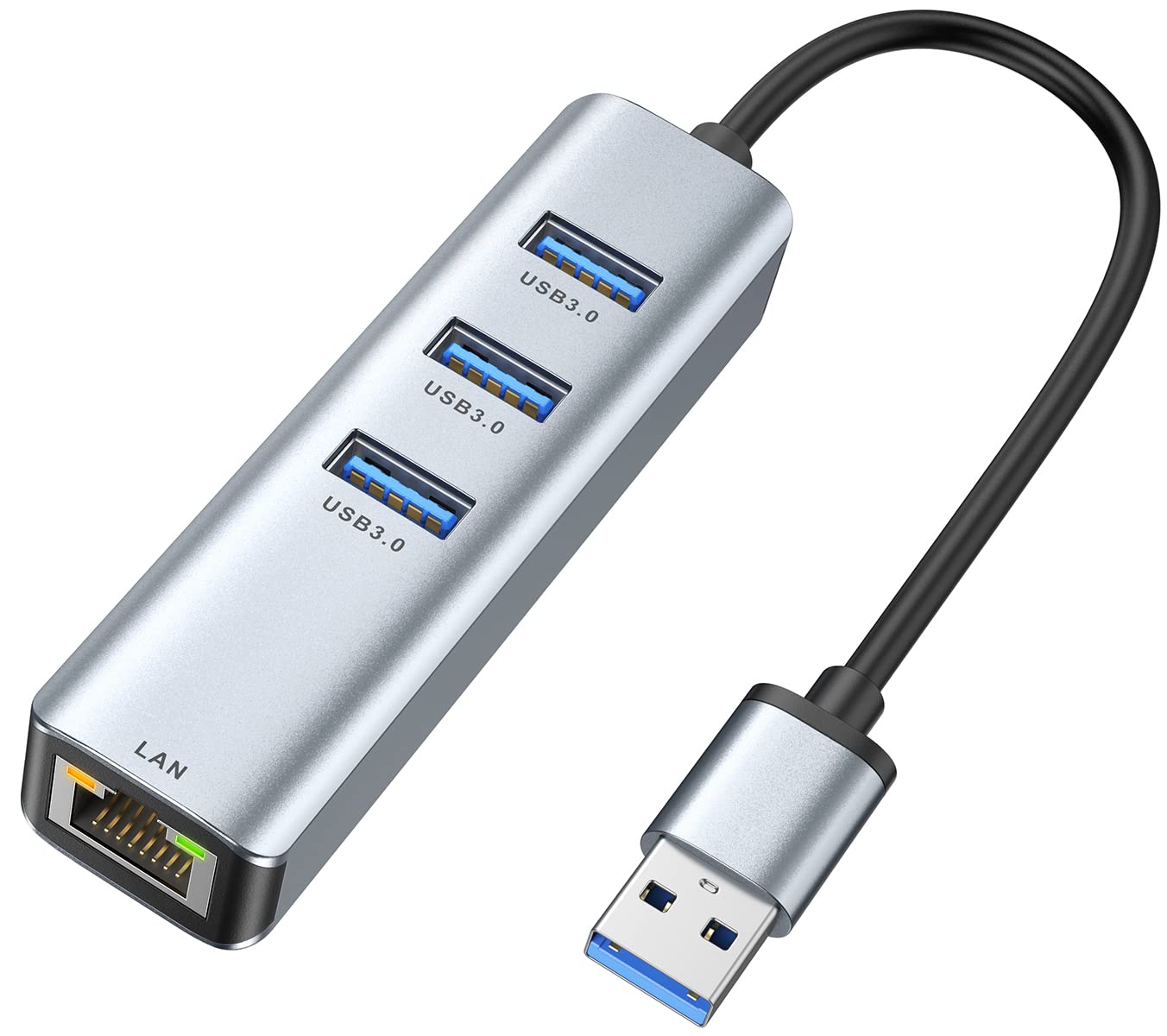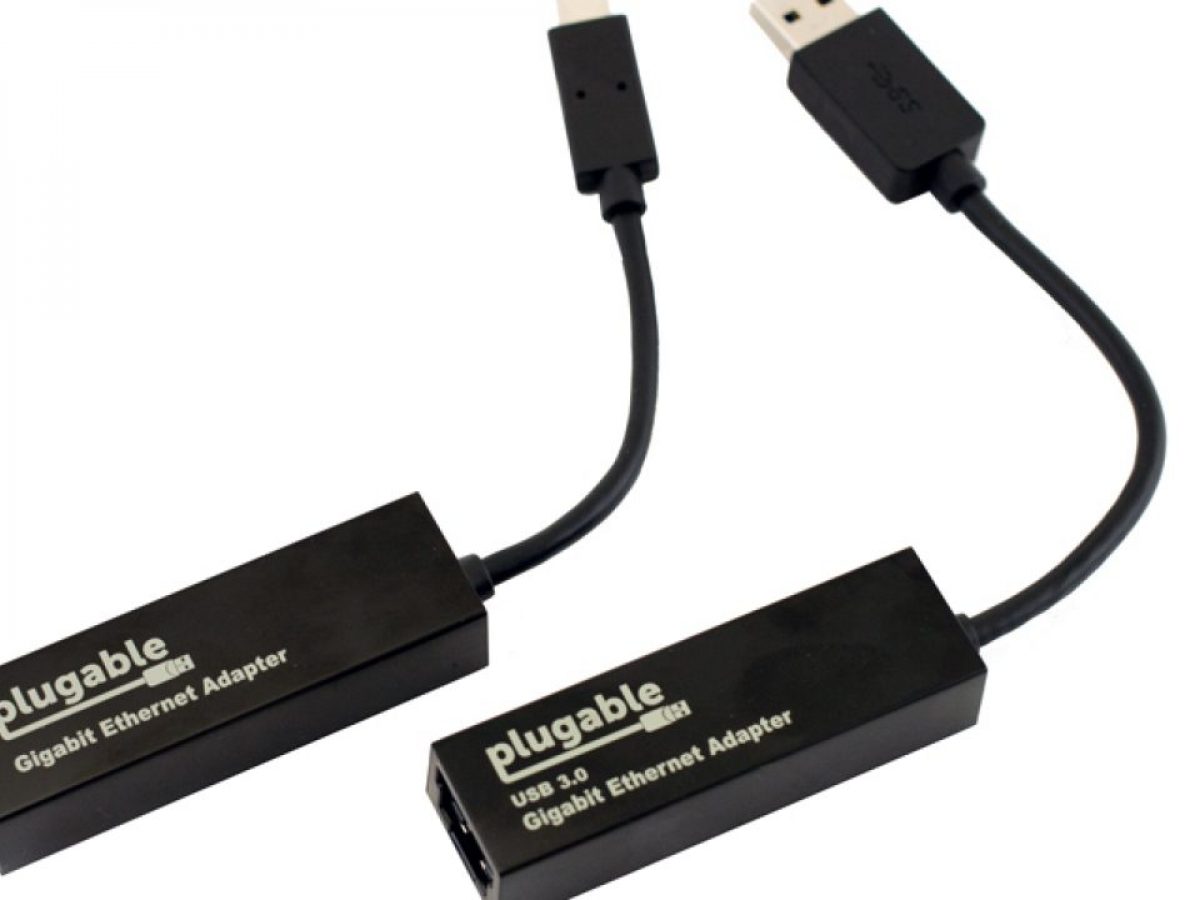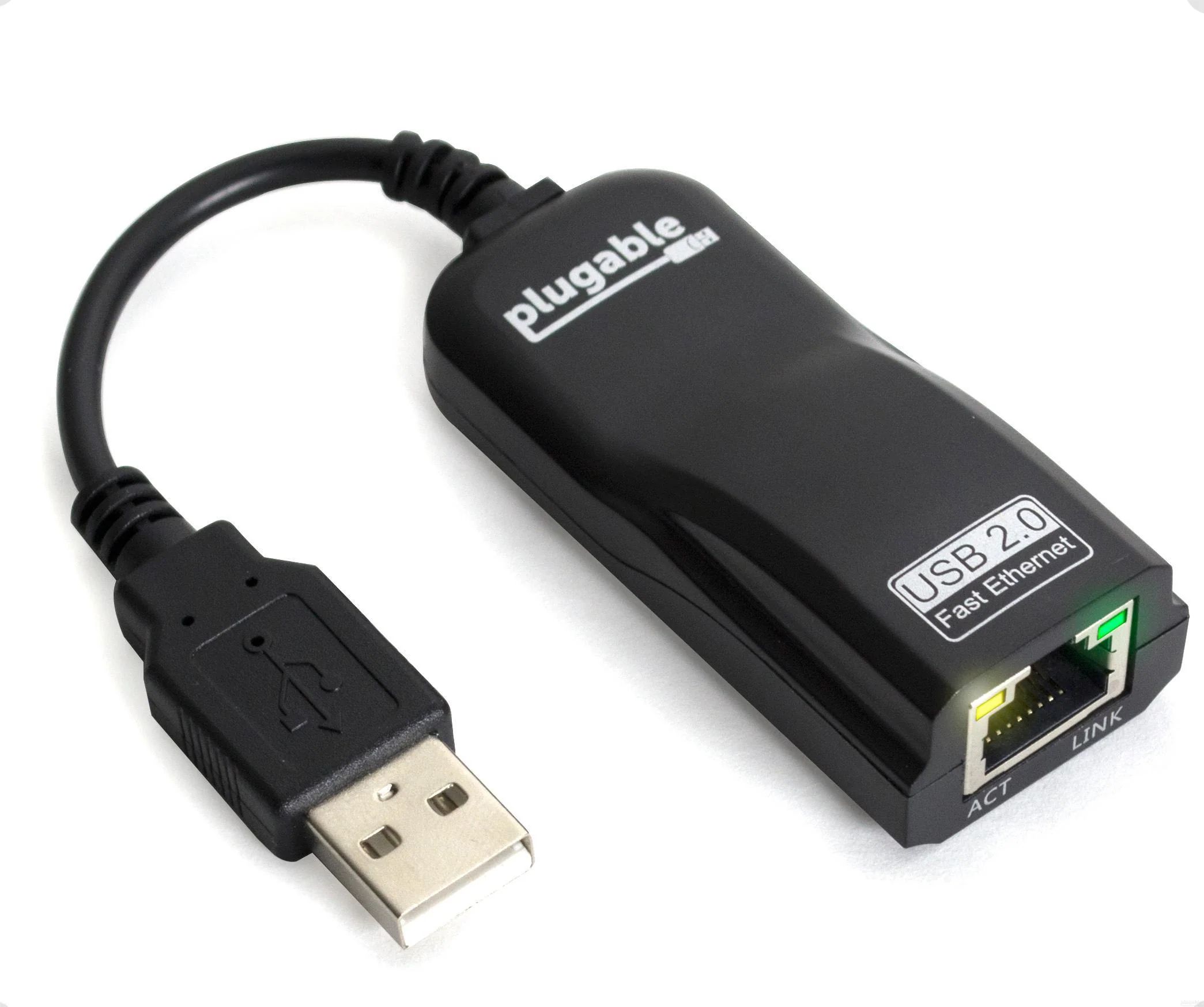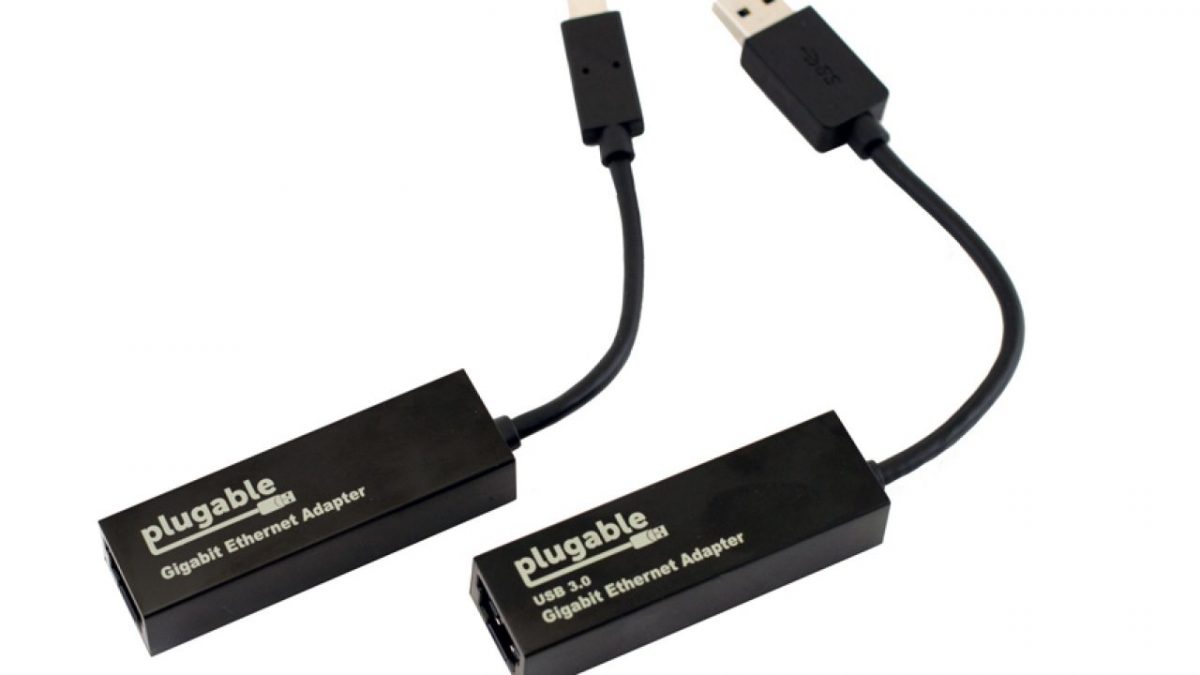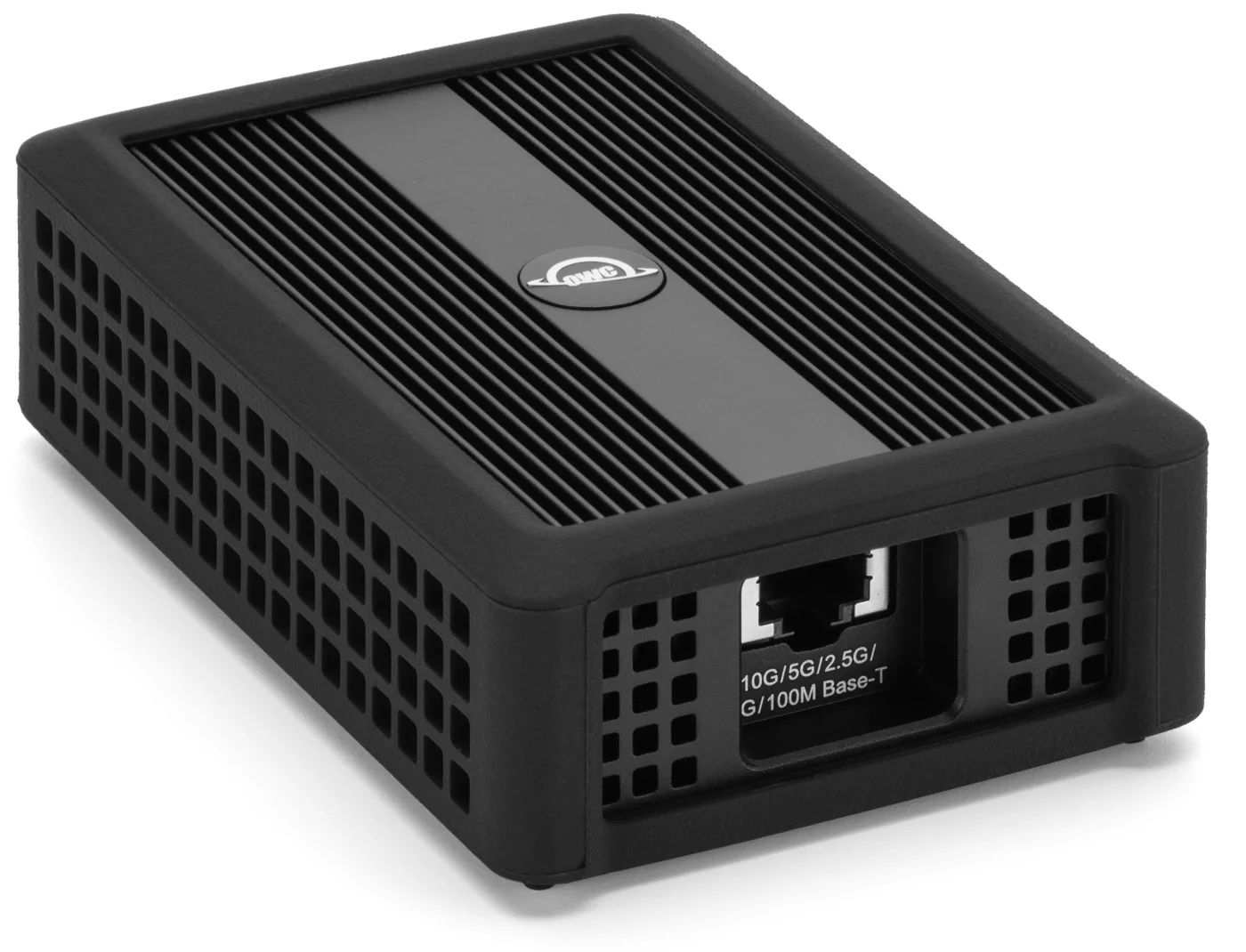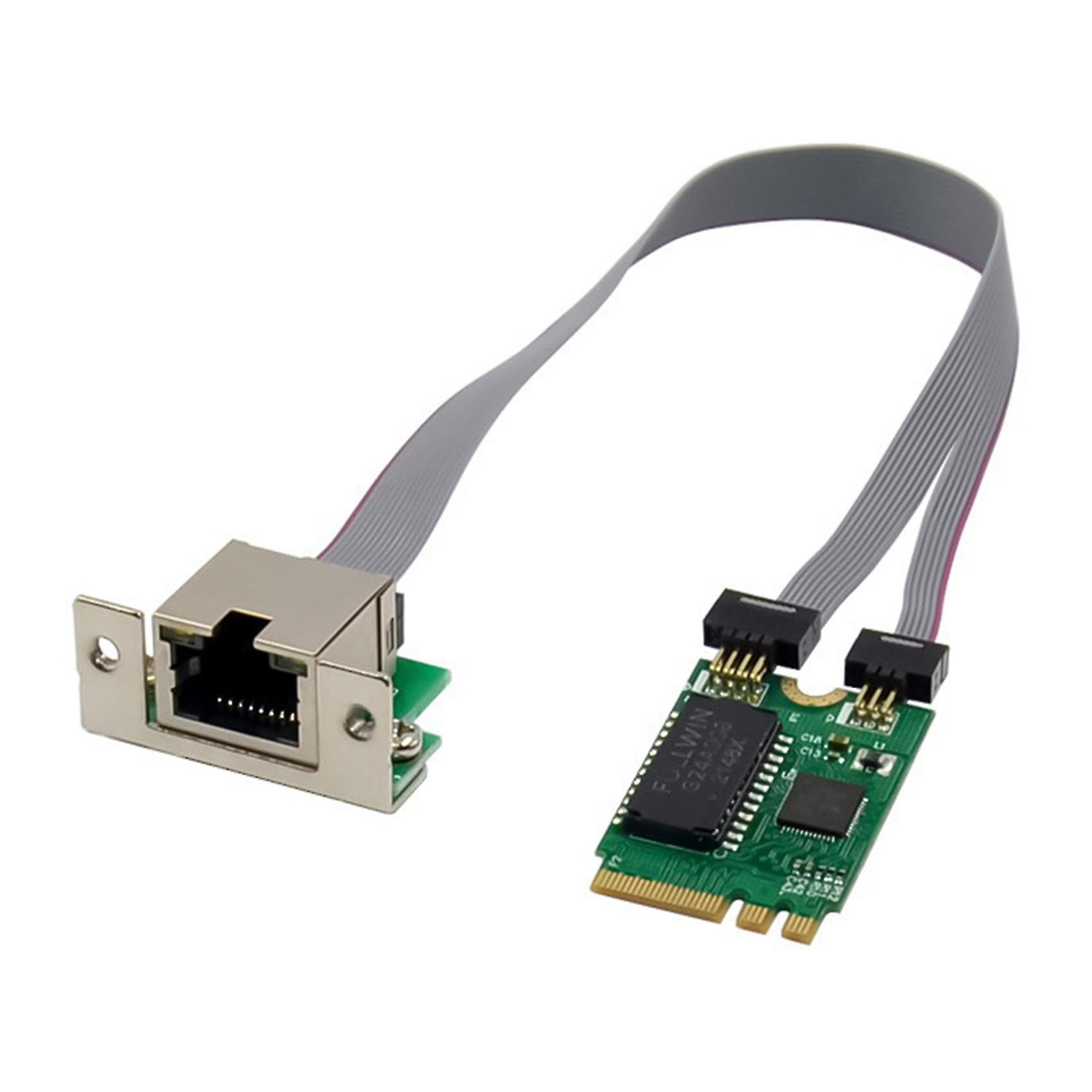Introduction
Installing the Ethernet driver on Windows 10 is essential for ensuring a stable and reliable internet connection. Without the proper driver, your computer may struggle to connect to the network or experience slow and intermittent internet speeds. Whether you are setting up a new computer or troubleshooting connectivity issues, having the correct Ethernet driver is crucial.
The Ethernet driver acts as a bridge between your computer’s hardware and the operating system, allowing it to communicate with the network. Windows 10 usually includes generic Ethernet drivers that work for most devices. However, in some cases, you may need to install the specific driver designated for your computer’s network adapter to optimize performance.
In this article, we will guide you through several methods to install the Ethernet driver on Windows 10. We will cover both the manual installation process using the Device Manager and downloading the driver from the manufacturer’s website, as well as utilizing automated tools for driver updates. Additionally, we will provide troubleshooting tips for any issues you may encounter during the installation process.
Before diving into the installation methods, it is important to ensure you have access to the necessary resources. Make sure you have an active internet connection, either through a wired Ethernet connection or a functioning Wi-Fi. You will need to download the driver file from the manufacturer’s website or utilize Windows Update to automatically install the latest driver version.
By following the steps outlined in this article, you will be able to successfully install the Ethernet driver on your Windows 10 system. This will help optimize your network connectivity, ensure faster internet speeds, and eliminate any compatibility issues. Let’s get started with the first method: installing the Ethernet driver from the Device Manager.
Before You Begin
Before proceeding with the installation of the Ethernet driver on your Windows 10 system, there are a few important considerations to keep in mind. Following these steps will help ensure a smooth installation process and prevent any potential issues:
- Identify your network adapter: Take note of the brand and model of your computer’s network adapter. This information can usually be found in the Device Manager or the manufacturer’s documentation. It is essential to have this information readily available as it will help you download the correct driver for your specific hardware.
- Backup your files: It is always a good practice to create a backup of your important files before making any significant changes to your computer’s drivers or system. While the installation process itself is unlikely to cause data loss, it is better to be safe than sorry. Consider saving your files to an external storage device or utilizing cloud storage services.
- Disable antivirus software: Some antivirus programs may interfere with the installation process, considering it as potentially malicious activity. Therefore, it is recommended to temporarily disable your antivirus software before proceeding. Once the driver is successfully installed, you can re-enable your antivirus program.
- Check for Windows updates: Ensure that your Windows 10 system is up to date. Microsoft often releases updates that include bug fixes and improvements, including updated drivers. It is beneficial to have the latest updates installed on your computer to optimize performance and compatibility.
- Have a stable internet connection: To download the driver files and complete the installation, you need a reliable and stable internet connection. If you are using a wired connection, make sure the Ethernet cable is securely connected to both your computer and the router. If you are using Wi-Fi, ensure that your connection is stable and not experiencing any interruptions.
By taking these necessary steps before starting the installation process, you can minimize the chances of encountering any difficulties. Following these recommendations will help ensure a successful installation and a hassle-free experience. Now that you are fully prepared, let’s move on to the different methods for installing the Ethernet driver on Windows 10.
Method 1: Install Ethernet Driver from Device Manager
The Device Manager in Windows 10 allows you to manually install or update drivers for various hardware components, including your Ethernet adapter. Here’s how you can install the Ethernet driver using the Device Manager:
- Open Device Manager: Right-click on the Start button and select “Device Manager” from the context menu. Alternatively, you can press the Windows key + X and choose Device Manager from the list.
- Locate the Network adapters section: Expand the Network adapters category to view your Ethernet adapter. It may be labeled as “Ethernet Controller” or have a specific brand and model name.
- Update driver software: Right-click on the Ethernet adapter and select “Update driver” from the options menu.
- Browse for driver software on your computer: Choose the option that says “Browse my computer for drivers.” This allows you to manually specify the location of the driver files.
- Specify the driver location: Click on “Let me pick from a list of available drivers on my computer.”
- Select the compatible driver: If you have downloaded the driver file from the manufacturer’s website, click on “Have Disk” and browse to the location where you saved the driver files. Choose the appropriate driver and click “Next” to proceed with the installation. If you don’t have the driver file, try selecting the option that says “Show compatible hardware” and then select the driver from the list.
- Complete the installation: Follow the on-screen instructions to complete the installation process. Once the driver is successfully installed, you may need to restart your computer for the changes to take effect.
By following these steps, you should be able to install the Ethernet driver manually using the Device Manager. If this method does not work or you encounter any issues, you can try the alternative methods discussed in the next sections.
Method 2: Download Ethernet Driver from Manufacturer’s Website
If you are unable to install the Ethernet driver using the Device Manager or prefer a more straightforward approach, you can download the driver directly from the manufacturer’s website. Here’s how you can do it:
- Identify your network adapter: Refer to the network adapter information you obtained earlier in the “Before You Begin” section. Note down the brand and model of your Ethernet adapter as this information is necessary to download the correct driver.
- Visit the manufacturer’s website: Open your web browser and navigate to the official website of the network adapter manufacturer. Most manufacturers have a dedicated support or drivers section on their website where you can find the required driver. Look for a search or support option on the site to make it easier to locate the driver.
- Find the driver download page: Once on the manufacturer’s website, search for the driver download page related to your specific network adapter model. This page may be labeled as “Downloads,” “Support,” or “Drivers.” Some manufacturers provide a search bar where you can directly input your network adapter model to find the appropriate driver download.
- Select the correct driver: On the driver download page, look for the driver compatible with your operating system and the specific model of your network adapter. It is important to ensure you download the correct driver version to avoid any compatibility issues.
- Download and install the driver: Click on the download link provided for the driver file. Once the download is complete, locate the driver file on your computer and double-click on it to begin the installation process. Follow the on-screen instructions to complete the installation.
- Restart your computer: After the driver is successfully installed, it is recommended to restart your computer to ensure that all changes take effect.
Downloading the Ethernet driver from the manufacturer’s website ensures you have the latest and most compatible driver for your network adapter. Remember to keep your network adapter model and operating system information handy to easily locate the correct driver. If you encounter any difficulties during the installation process or do not find the appropriate driver, don’t worry. In the next section, we will explore an alternative method to update the Ethernet driver.
Method 3: Update Ethernet Driver using Windows Update
Windows 10 offers a convenient built-in feature called Windows Update, which allows you to automatically download and install the latest drivers for your computer components, including the Ethernet adapter. Here’s how you can update the Ethernet driver using Windows Update:
- Open Windows Update: Click on the Start button and select “Settings.” In the Settings menu, click on “Update & Security.”
- Check for updates: In the Update & Security window, click on the “Check for updates” button. Windows will then check for any available updates.
- Download and install the driver update: If a driver update for your Ethernet adapter is available, it will be listed under “Optional updates” or “Driver updates.” Locate the Ethernet driver update and click on “Download and install.” Windows will automatically download and install the update.
- Restart your computer: After the driver update is installed, it is recommended to restart your computer to ensure that all changes take effect.
Using Windows Update to update your Ethernet driver ensures that you have the most up-to-date and compatible driver version for your system. Windows Update regularly checks for driver updates and installs them automatically, alongside other important system updates. It is a convenient method that saves you time and effort.
However, please note that Windows Update may take some time to detect and offer the latest driver updates. Additionally, the driver available through Windows Update may not always be the most recent version released by the manufacturer. If you need to urgently update your Ethernet driver or want to ensure you have the latest version, considering one of the other methods discussed earlier would be beneficial.
Now that we have covered various methods to install or update the Ethernet driver on Windows 10, let’s explore an alternative approach using third-party tools in the next section.
Method 4: Install Ethernet Driver Using Third-Party Tools
If you are looking for a more automated and user-friendly approach to install or update your Ethernet driver, you can consider using third-party driver update tools. These tools scan your system, identify outdated or missing drivers, and offer a convenient way to install the latest driver updates. Here’s how you can install the Ethernet driver using third-party tools:
- Research and choose a reliable tool: Look for reputable third-party driver update tools available online. Read reviews, compare features, and ensure the tool offers a driver database that includes Ethernet drivers for your specific network adapter.
- Download and install the tool: Visit the official website of the tool you have chosen and download the installation file. Once the download is complete, run the file and follow the on-screen instructions to install the tool on your computer.
- Scan for outdated drivers: Launch the third-party tool and initiate a system scan. The tool will scan your computer for outdated or missing drivers, including the Ethernet driver.
- Select and install Ethernet driver: Once the scan is complete, the tool will display a list of outdated or missing drivers. Locate the Ethernet driver in the list and select it for installation. The tool will download and install the latest driver version for your network adapter.
- Restart your computer: After the driver installation is complete, it is recommended to restart your computer to ensure that all changes take effect.
Using third-party driver update tools can save you time and effort by automating the driver installation process. These tools often provide a more user-friendly interface and ensure that you have the latest and most compatible drivers for your system. However, it is important to choose a reliable tool from reputable sources to avoid any potential security risks or compatibility issues.
While third-party tools can be convenient, it’s worth noting that they may require a paid license to access all features or to download drivers. Additionally, relying solely on these tools for driver updates may not always guarantee the most up-to-date drivers, as some manufacturers may release new drivers that are not immediately included in the driver database of the third-party tool.
Now that we have explored different methods to install or update the Ethernet driver on Windows 10, you are equipped with multiple options to ensure a stable and reliable internet connection. In the next section, we will provide troubleshooting tips to help you address any issues that may arise during the Ethernet driver installation process.
Troubleshooting Ethernet Driver Installation Issues
While installing the Ethernet driver on Windows 10 is generally a straightforward process, you may encounter certain issues along the way. Here are some troubleshooting tips to help you address common problems that may arise during the Ethernet driver installation:
- Check for internet connectivity: Before installing the Ethernet driver, ensure you have an active internet connection. If you are using a wired connection, verify that the Ethernet cable is securely connected to both your computer and the router. If you are using Wi-Fi, make sure your connection is stable and not experiencing any interruptions.
- Restart your computer: Sometimes, a simple restart can resolve driver installation issues. Restart your computer and try installing the Ethernet driver again.
- Verify driver compatibility: Ensure that you are downloading the correct driver for your specific network adapter model and Windows 10 version. Installing an incompatible driver can cause installation failures or compatibility issues. Double-check the compatibility information provided by the manufacturer or consult their support documentation.
- Disable antivirus software: Antivirus programs might mistakenly flag the driver installation process as a security threat and block it. Temporarily disable your antivirus software before installing the driver and remember to re-enable it once the installation is complete.
- Clean up previous driver installations: If you have previously installed a different version or an incompatible driver for your Ethernet adapter, it may cause conflicts during the installation process. Use any available driver cleanup tools or manually uninstall the previous driver before attempting to install the new one.
- Try a different installation method: If you are encountering issues with one method, try an alternative method. For example, if you were initially trying to install the driver using the Device Manager, switch to downloading the driver from the manufacturer’s website or using a third-party driver update tool.
- Seek manufacturer support: If you have exhausted all troubleshooting steps and still cannot install the Ethernet driver, consider reaching out to the manufacturer’s support. They may provide additional guidance or offer specific instructions tailored to your network adapter model and Windows 10 version.
By following these troubleshooting steps, you can overcome common issues that may arise during the Ethernet driver installation process. Remember to be patient and thorough, as finding the right solution may take some time. With persistence and the right resources, you can successfully install the Ethernet driver and enjoy a stable internet connection on your Windows 10 system.
Conclusion
Installing the Ethernet driver on your Windows 10 system is crucial for establishing and maintaining a stable and reliable internet connection. Throughout this article, we have explored various methods to install or update the Ethernet driver, including using the Device Manager, downloading the driver from the manufacturer’s website, utilizing Windows Update, and employing third-party driver update tools. Each method offers its own advantages and may be more suitable for different scenarios.
Before starting the installation process, it is important to prepare by identifying your network adapter, backing up your files, disabling antivirus software, checking for Windows updates, and ensuring a stable internet connection. Following these steps will help you avoid common issues and ensure a smooth installation experience.
If you encounter any challenges during the installation process, such as internet connectivity problems, incompatibility issues, or error messages, we provided troubleshooting tips to help you overcome these hurdles. By following these troubleshooting steps and seeking manufacturer support if needed, you can address most installation issues and successfully install the Ethernet driver on your Windows 10 system.
Remember to always download the correct driver for your specific network adapter model and ensure the driver is compatible with your Windows 10 version. Keeping your Ethernet driver up to date helps optimize your network connectivity, improve internet speeds, and resolve compatibility issues.
Whether you choose to install the Ethernet driver manually using the Device Manager, download it from the manufacturer’s website, update it through Windows Update, or use third-party driver update tools, the goal remains the same – to ensure a stable and reliable internet connection on your Windows 10 system. Select the method that suits your needs and technical comfort level.
With the installation process and troubleshooting tips provided in this article, you are now equipped to handle Ethernet driver installation on your Windows 10 system. Enjoy a seamless and uninterrupted browsing experience with a properly installed Ethernet driver!









